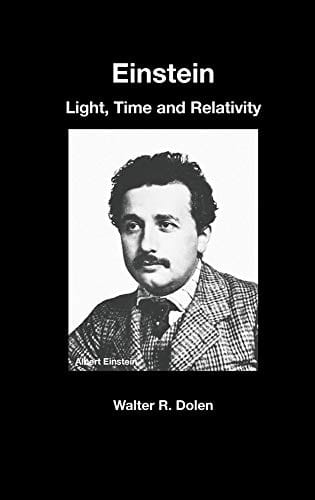Spin: The Many Ways Rotation Shapes Our World
Discover how spin shapes physics, technology, fitness and media, and learn to harness its power responsibly.

Why Spin Matters Everywhere
Give any object angular momentum and something magical happens: it gains stability, stores information, builds muscle, even twists language. Spin is the single word that connects quantum physics, bicycle wheels, washing machines, fitness studios and media headlines. Understanding how and why things spin can make you a better learner, consumer and critical thinker.
Defining Spin in Simple Terms
At its core, spin is rotation around an internal or external axis. A child’s top, a neutron inside an atom, and the drum of your clothes dryer all share this property. The energy stored in that rotation can be harnessed to do work, encode data or create visual spectacle. Because spin pops up in many contexts, it helps to explore each in turn.
The Science of Spin in Classical Physics
In classical mechanics, angular momentum is conserved. That means when a figure skater pulls in her arms, her rotational speed increases so the product of mass, spin rate and radius stays constant. Applications range from gyroscopes that stabilize smartphones to the spinning turbines that turn wind into electricity. These devices rely on predictable, measurable rotation.
Quantum Spin: A Fundamental Property
Move down to the sub-atomic scale and spin takes on a more mysterious role. Electrons, protons and neutrons possess intrinsic spin, measured in fractions of Planck’s constant. Unlike a toy top, quantum particles do not literally twirl; their spin is an inherent property like charge or mass. Yet it has real effects: magnetic resonance imaging (MRI) exploits nuclear spin to create detailed body scans, and quantum computers use electron spin states as qubits to perform calculations that outpace classical machines.
Spin in Everyday Technology
Rotational motion powers much of the hardware you touch daily. Hard-disk drives store data by spinning platters at up to 7,200 revolutions per minute while write heads flip magnetic domains. Even with the rise of solid-state storage, billions of legacy systems still rely on this tried-and-true spinning medium. Fans inside laptops, GPUs and game consoles spin to dissipate heat, keeping processors under critical temperature thresholds.
Meanwhile, household appliances turn rotation into useful work. A washing machine’s drum agitates fabric, lifting dirt through repeated spin cycles. In a centrifugal juicer, spinning mesh filters separate juice from pulp. Vacuum cleaners generate suction using high-speed impellers. The principle remains the same: convert electrical energy into spin, then translate that rotation into a desired output.
Spin as a Fitness Phenomenon
Sign up for a group exercise class and you might find yourself on a stationary bike, sweating under neon lights. The modern spin class—popularized by brands like SoulCycle and Peloton—combines upbeat music, instructor cues and tailored resistance to deliver a high-intensity cardio workout. Riders alternate between seated climbs and standing sprints, matching pedal cadence to driving rhythms.
Health Benefits of Spinning
Because resistance can be adjusted on the fly, spin workouts accommodate beginners and elite athletes alike. Research shows that consistent cycling improves VO2 max, strengthens lower-body musculature and burns up to 600 calories in a 45-minute session. Moreover, low joint impact makes spinning ideal for cross-training or rehabilitation. Many participants also praise its mental benefits: rhythmic movement and collective energy create a state of flow that reduces perceived exertion.
Spin in Marketing and Media
Not all spin involves physical rotation. In public relations, “to spin” means presenting information so that it appears favorable, regardless of underlying facts. Politicians highlight selected statistics, companies reframe setbacks as opportunities, and news outlets craft headlines engineered for clicks. Just as angular momentum stores kinetic energy, rhetorical spin stores persuasive power—often at the expense of nuance.
Critical thinking acts as the friction that slows manipulative spin. Ask what data are omitted, compare multiple sources and look for peer-reviewed evidence. Recognizing linguistic spin equips you to separate signal from noise in a media landscape that moves as quickly as any spinning disk.
Using Spin Responsibly
Whether you are designing a product, teaching a class or writing a press release, spin should serve accuracy and transparency. Engineers must balance rotational speed with material limits to avoid catastrophic failure. Fitness instructors should emphasize proper bike setup to prevent knee strain. Communicators, finally, should provide context so audiences can make informed decisions.
Key Takeaways About Spin
Spin is more than a buzzword. Conserved angular momentum keeps satellites oriented, quantum spin powers MRI, rotating blades harvest wind energy, and spin classes promote cardiovascular health. Yet the same term can describe rhetorical sleight of hand. Grasping the physics, applications and pitfalls of spin helps you leverage its benefits while steering clear of its dangers.
From the microscopic to the global, from the gym to the newsroom, spin is everywhere. Next time you press play on a record player or scroll past a glossy headline, remember the invisible rotation that keeps our world turning—and consider how you might put spin to productive, honest use.



